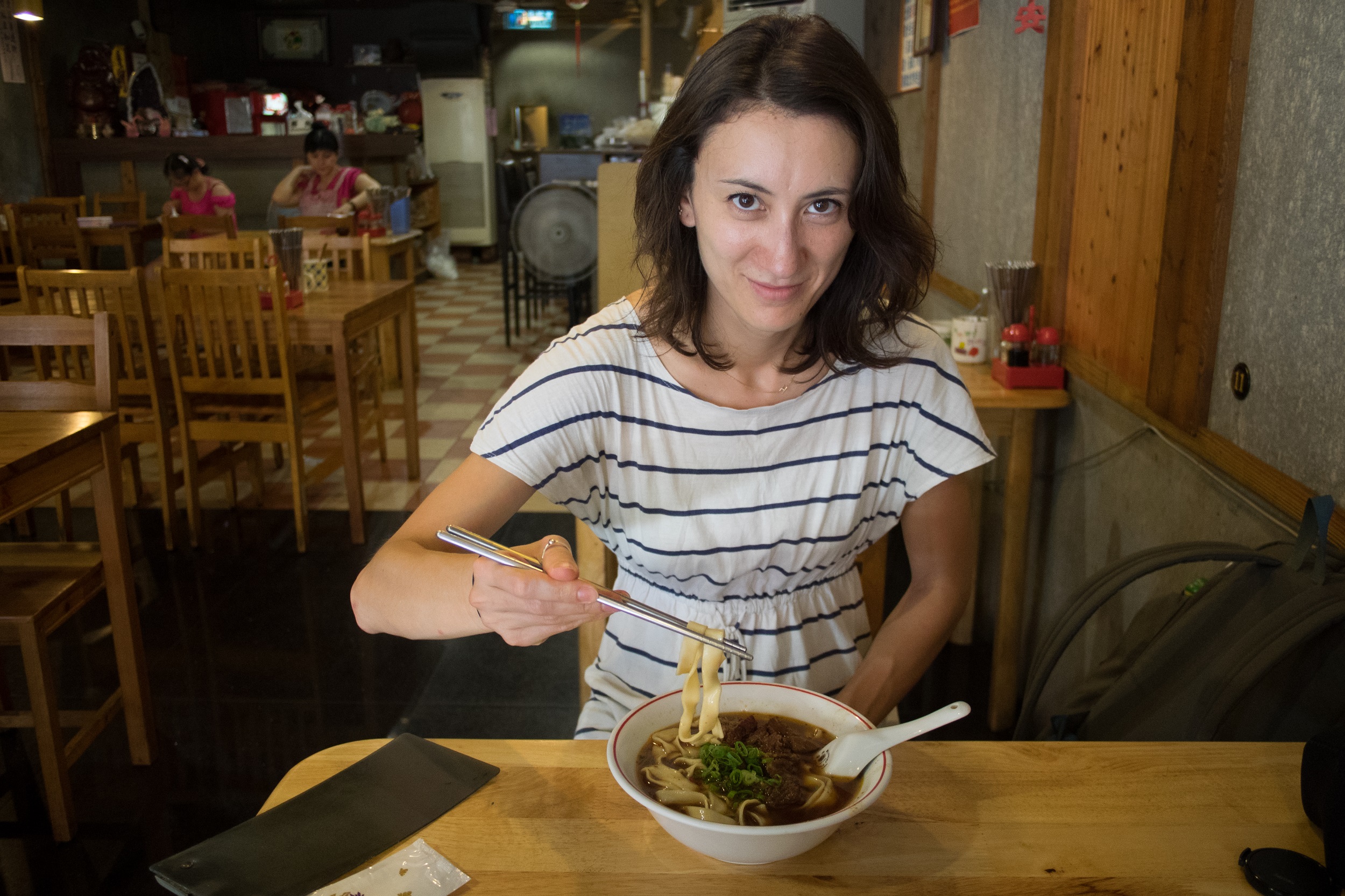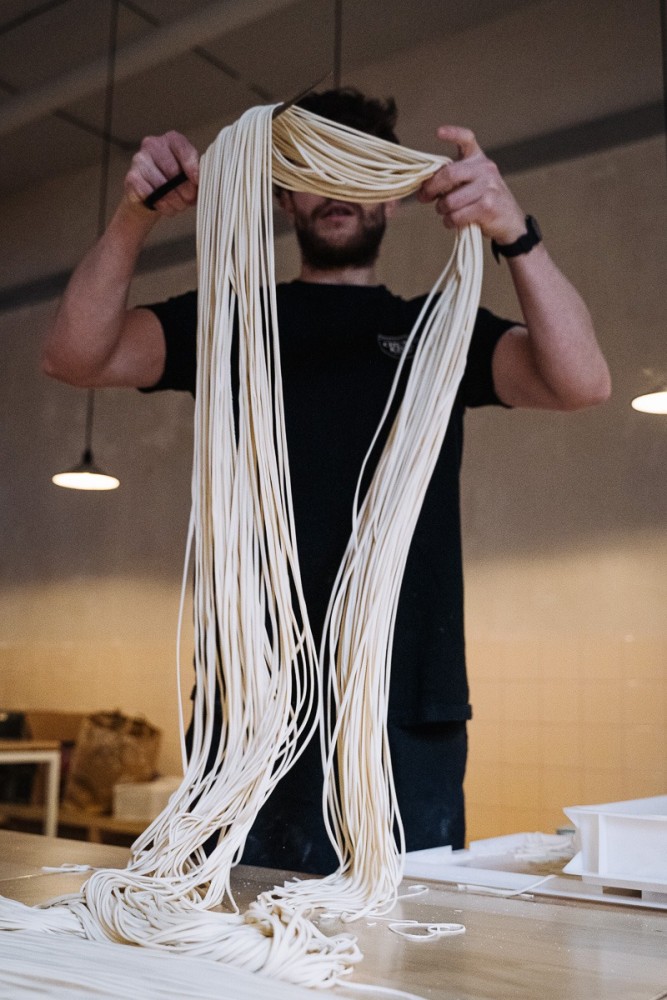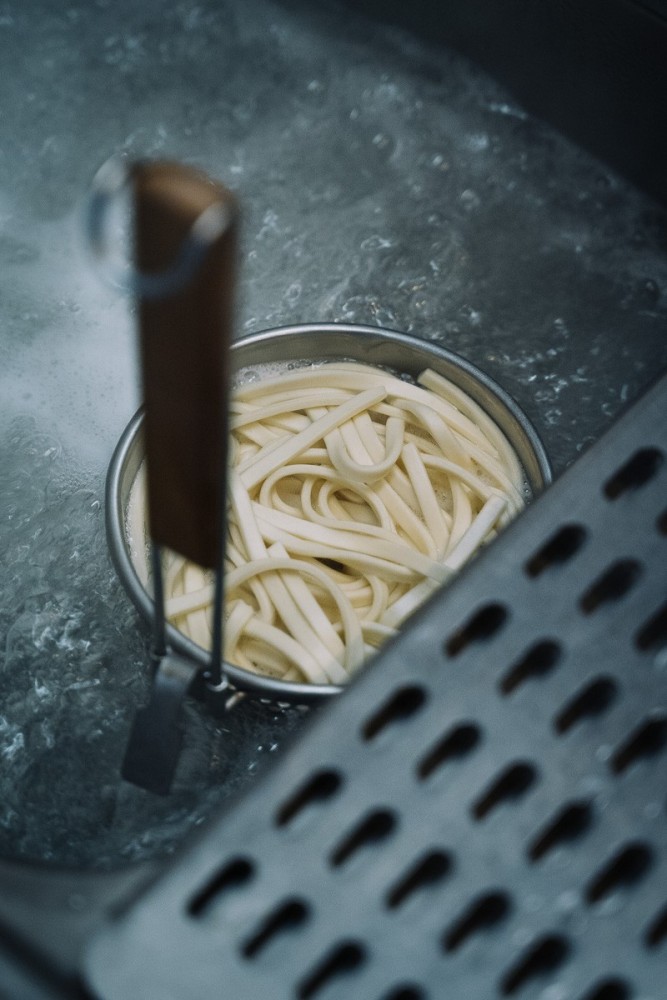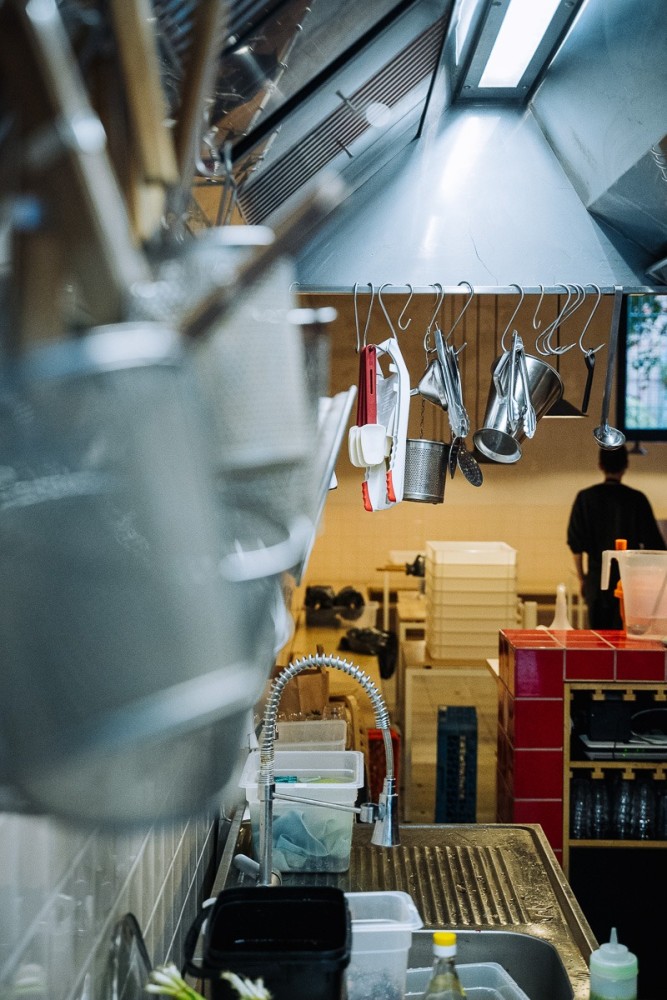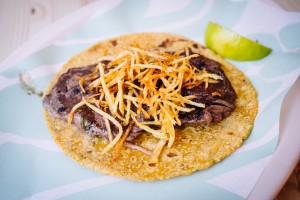The first rule of noodle club is we do not call them noods.
The second rule of noodle club is we do NOT call them noods.
The third rule of noodle club is: we do not fetishize handmade over dried. Because the stuff that goes with the noodle — sauce, broth, seasonings — is what holds the dish together. Perfectly bouncy, hand-pulled noodles ain’t shit if the rest of the bowl is neglected. Flavor trumps texture. Still with me?

It’s no secret that Berlin has gone noodle-crazy over the past four years. It all started when Liu Chengdu Weidao Nudelhaus opened in late 2018, introducing Berliners to the absolute culinary wonder that is a well-made bowl of Sichuan noodles. Then, the following year, came Chungking Noodles, drawing snaking lines of hungry diners from day one. By the time Wen Cheng followed in mid-2021, Berlin’s noodle obsession fate was sealed.
The long and short of this wonderful situation is that noodle fanatics like me can feast on Chengdu-style tianshui (sweet water) noodles on Monday, Shaanxi-style biang biang noodles on Tuesday, Beijing-style zhajiang noodles on Wednesday… you get the picture. This level of culinary diversity was unthinkable for Berlin merely five years ago. (And I’m not even including the excellent Japanese, Thai, and Korean noodle joints that have opened—more on those another time.)
But, the more things change, the more they stay the same.
Yes, we have far more options than before. But many of these options are simply no good. The noodle hype is leading to a noodle glut. I’m here today to pinpoint one of the culprits: the prevailing obsession with hand-pulled noodles. If dropping the magic ‘H’-word on Instagram is enough to get people through the door, then it’s far too easy for restaurant owners to get lazy and neglect what really matters – flavor. Berlin’s food scene has simply put the cart before the horse. What’s the point in taking the time to make noodles by hand, then serving them with sad, soulless seasonings? I write this as someone who recently paid 12 Euros for a bowl of handmade noodles that tasted like nothing but watery chili oil. At least the pink terrazzo table looked pretty on Instagram?
"Okay then, cranky internet lady", I can hear you saying. Where should I go for noodles then? Well, more than four years on, Liu Chengdu Weidao remains the champion of Berlin’s noodle scene. Just one of their dishes—the extra thicc, extra chewy tianshui noodles, served room temperature in a perfectly salty-sweet dressing of treacly soy, chili oil, sesame paste, and raw garlic—features the hypebeast handmade noodles. There’s no one standout dish; everything is good. Whether you order the zajiang noodles with seasoned minced pork, the shenjiang noodles with minced beef and fresh bird’s eye chili, or the Sichuan beef noodle soup, it’s all so damn tasty, layered with multiple dimensions of face-numbing flavor, I guarantee you won’t notice the noodles were ever once dried. (Full disclosure: I worked in the kitchen at Liu’s for a year—more on that in a sec.)

With long waits for tables pretty much every night of the week, neither Chungking Noodles nor Wen Cheng need much introduction. If you like noodles, you won’t have a bad time at either joint. Chungking’s homemade lamian noodles (thinner, rounder) have a nice bounciness, and the meat is tender and nicely seasoned.
“ If you like noodles, you won’t have a bad time at either joint.

Wen Cheng’s specialty is wide biang biang noodles (a.k.a. belt noodles) from northwestern Shaanxi, with raggedy edges and a toothsome chew. These come topped with stewed beef chunks (eggplant for the vegans) with a bit less depth of flavor than I’d like. Wen Cheng’s version of that famous Xi’an dish, biang biang noodles with cumin lamb, is undeniably tasty, though the lamb—stewed ragout-style rather than wok-fried—has a muted rather than zippy cumin flavor.
“ ...raggedy edges and a toothsome chew...

Started from the bottom, now we here
Personally, I’d tweak the bowl seasonings at both places, but I have strong opinions on such matters, which predate my cooking days at Liu Chengdu Weidao. Those opinions were born during my childhood in Taiwan and China, where noodles were as essential to my life as bread is to a German’s. It was my mother who first taught me that making well-seasoned noodles starts at the bottom of the bowl: a splash of light soy, dark soy, vinegar. It was Lin, proprietress and chef extraordinaire of Liu Chengdu Weidao, who showed me how a vast array of flavor elements plopped at bowl bottom take your noodles from zero to 10 on the flavor scale. (This, by the way, is why thorough and constant mixing is a crucial part of the noodle-eating experience.) These bottom-of-the-bowl seasonings can make or break the dish.
At Chungking Noodles, the seasonings are dominated by two strong and somewhat overwhelming flavors: the smoky style of chili oil, and the generous pour of vinegar. I’m not even sure Wen Cheng uses any bowl seasonings, or if they do, they are on the mild side. A splash of black vinegar helps.

Noodles worth traveling for
Of the many newer noodle spots, two are worth crossing the city for, even in this chilly weather. The first is Prenzlauer Berg’s Kongfu Chili, which makes a mean, hand-pulled belt noodle served in the northwestern youpo mian (oil-splashed) style, capped with minced garlic and chili flakes and doused in sizzling oil just before serving. (These bowls will be familiar to fans of the now-shuttered Grand Tang Xi Yu, though Kongfu Chili’s are less haphazard with more breadth of flavor.) The noodle texture is great and the seasonings top-notch. The standout dish is the “Three in One,” which combines the aforementioned youpo belt noodles with stewed beef and saozi: diced vegetables and pressed tofu sauteed in chili bean paste. The more (flavor) the merrier, I say.


And, don’t miss MingTastic, opened in summer 2022 in an unlikely location; upstairs in the food court of the Bikini Berlin Mall at Zoo Station. On the menu are handmade noodles, both the wide and thin (I find the former to have the better texture), and I give their bowl seasonings my personal thumbs up. My go-to order: the non-soup beef noodles, with the somewhat confusing name of Beef Bolognese Hand-Pulled Noodles. Bonus: the pan-fried shengjianbao—buns stuffed with pork or veggies — are among the best in town.
Last but not least, I’d like to drop two honorable mentions: Chinese restaurants just doing their thing Out West in Berlin’s closest thing to a Chinatown (a.k.a. Wilmersdorf) – far off the beat of the hipster noodle hype. Shaniu’s House of Noodles is like the Old Faithful of Berlin’s Chinese restaurant landscape: homey, consistent, and affordable – well-loved amongst (homesick) Chinese students for those reasons. The “Chinese spaghetti,” Shaniu’s version of northern zhajiang noodles, tastes like something your Chinese mother would make.

Then there’s Deli House, the current obsessive subject of all my Chinese food cravings. Noodle soups like addictive suan la fen (bouncy sweet potato noodles in a sour-spicy broth) comprise only a small part of the chef’s top-notch repertoire—the array of cold starters are particularly excellent. That’s the only thing wrong with this place: with so many delicious options, the choice is excruciating.



So there you have it: noodles and more noodles for every day of the week. Go forth and feast.
Just don’t let me hear you calling them noods.



